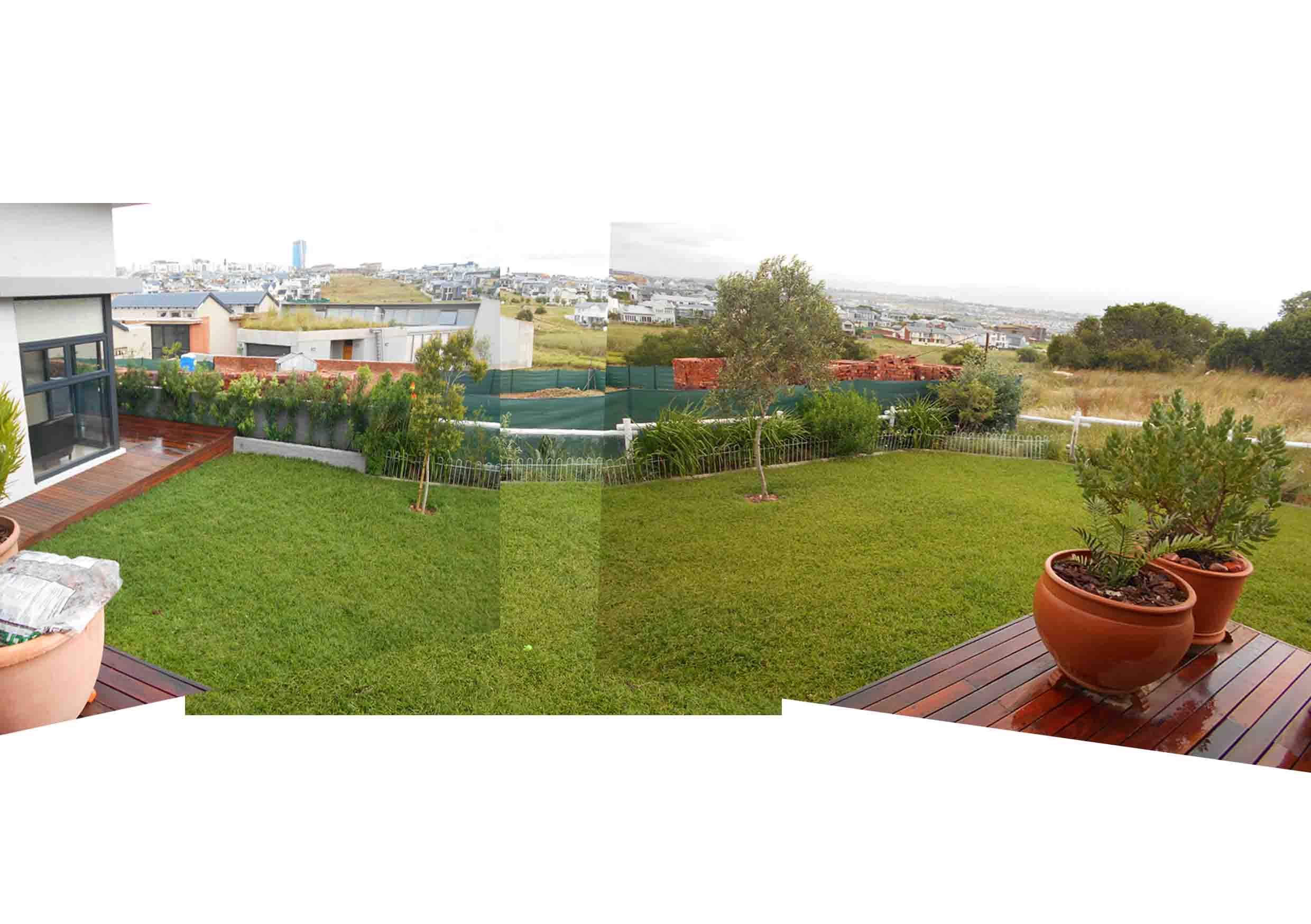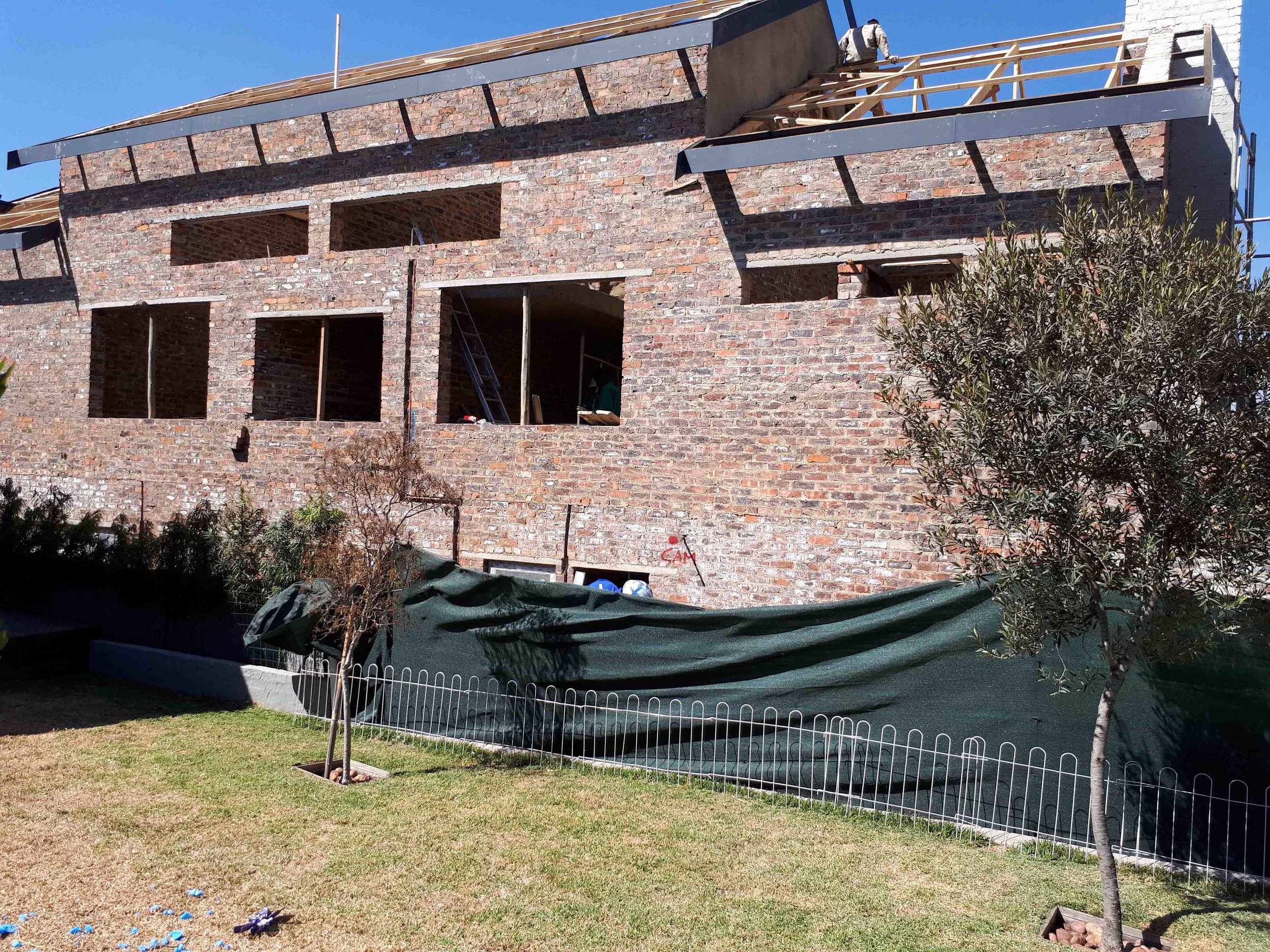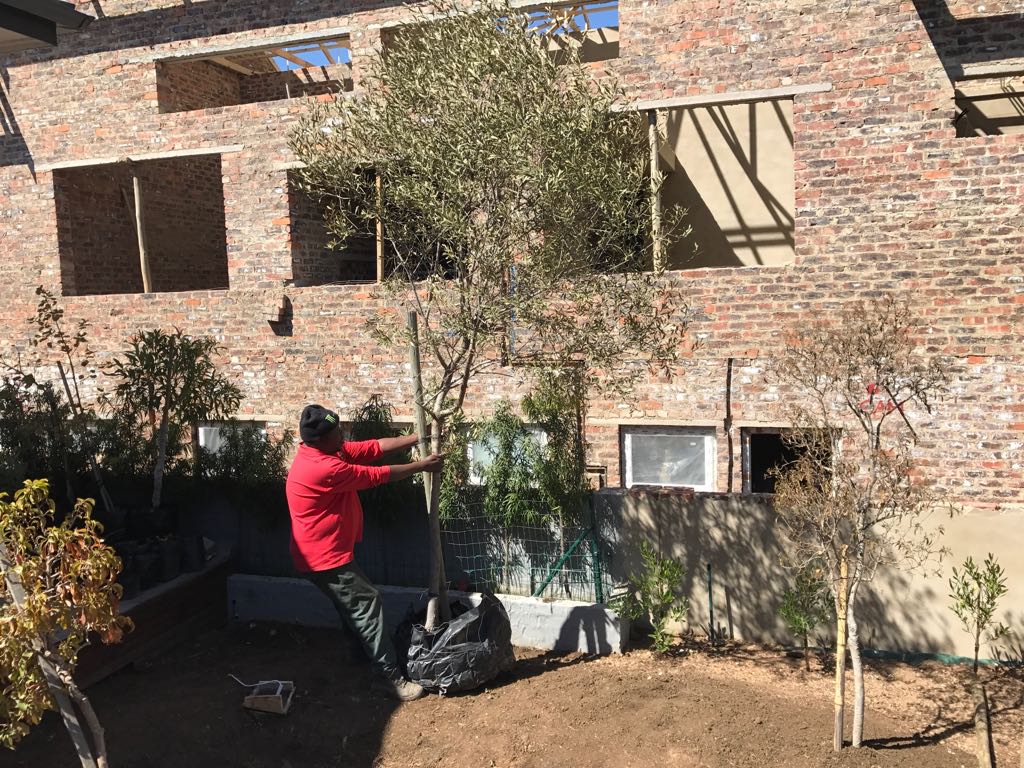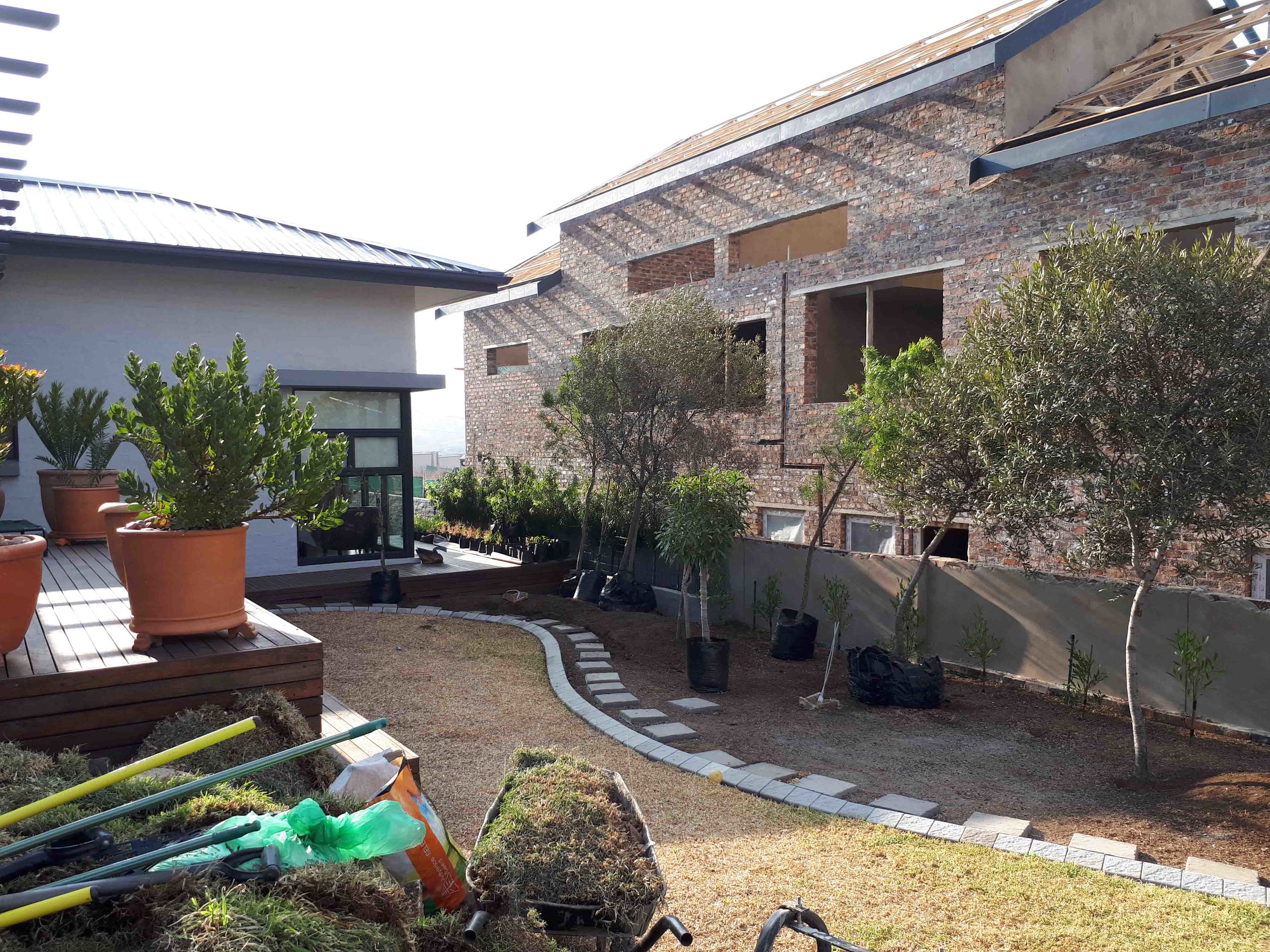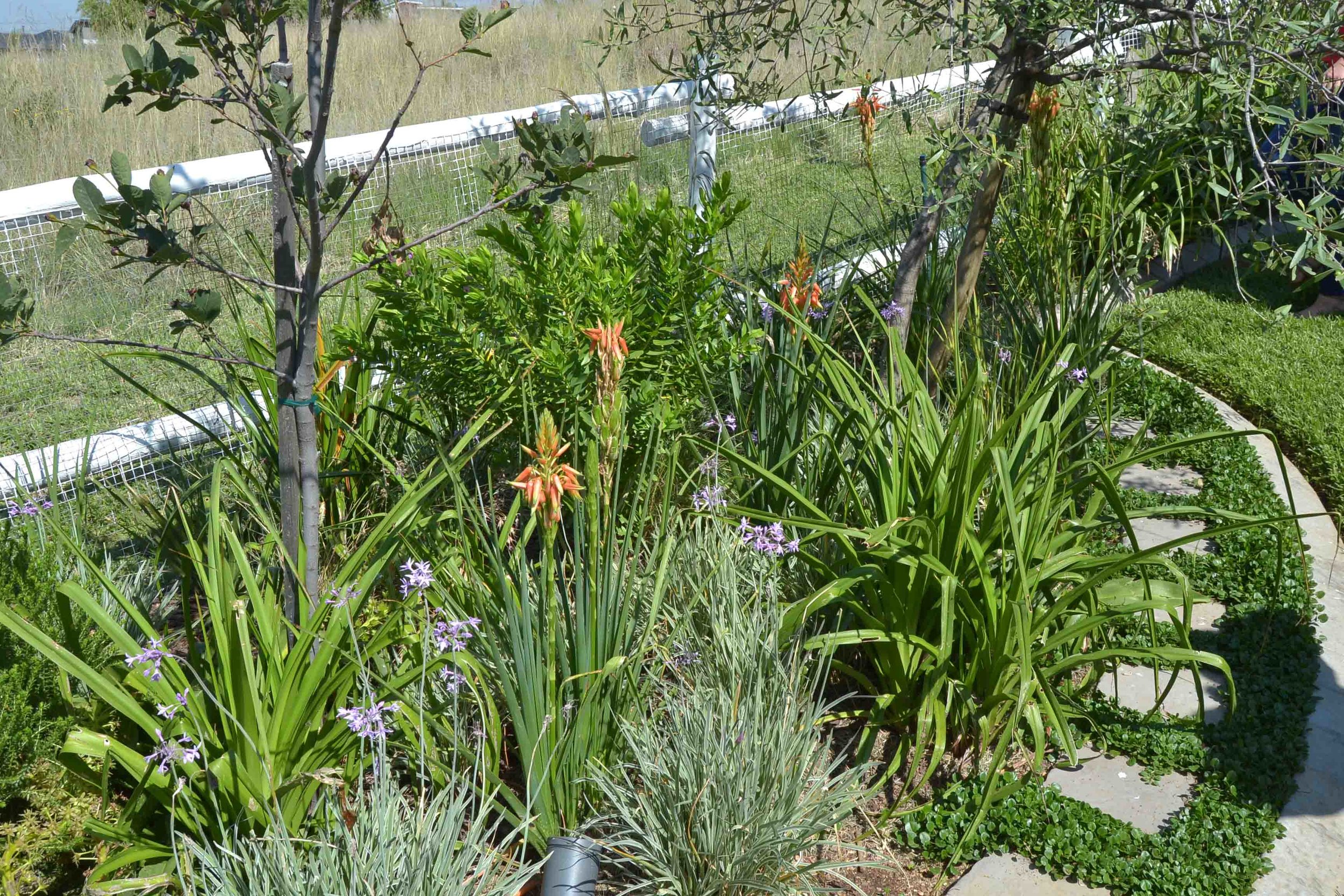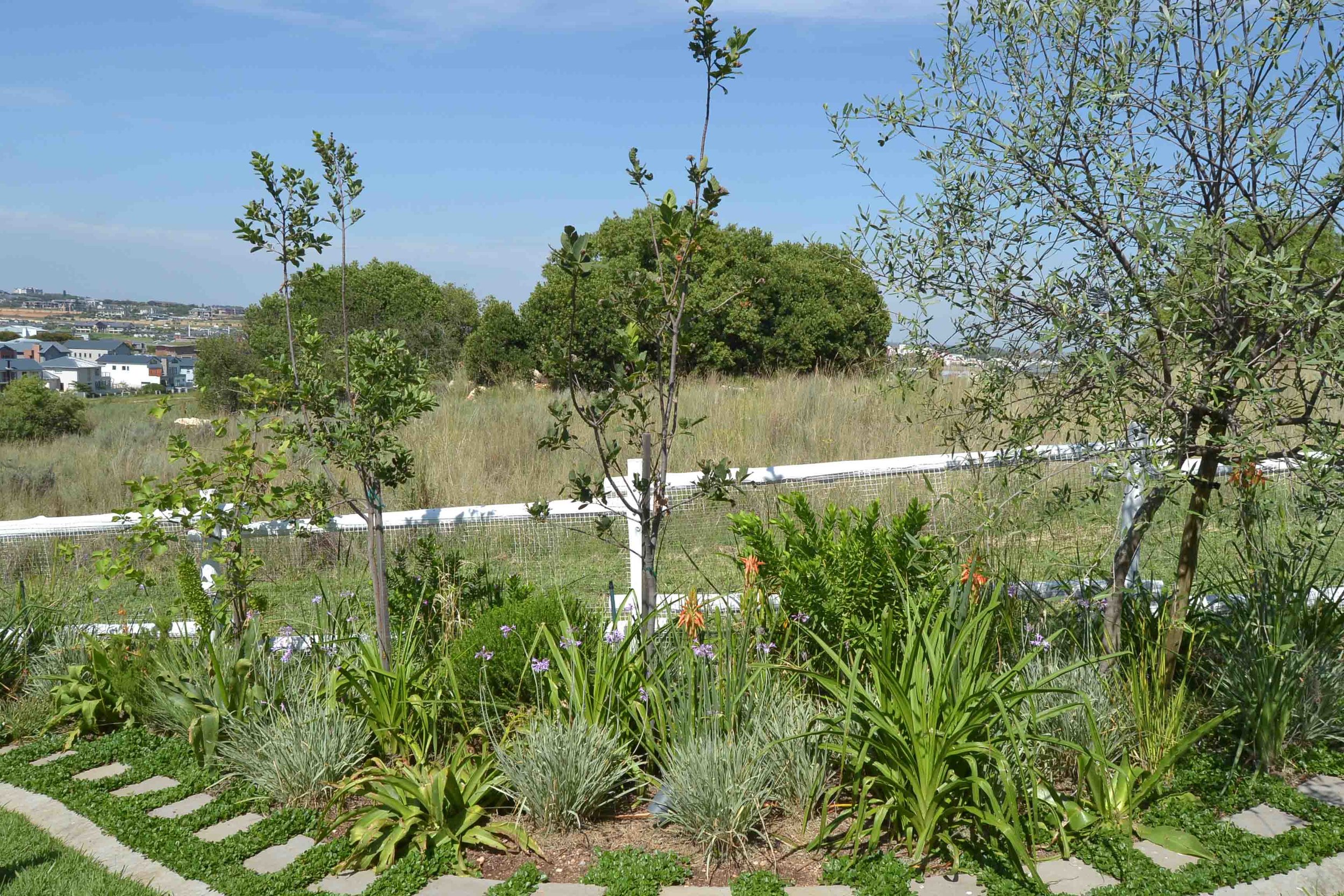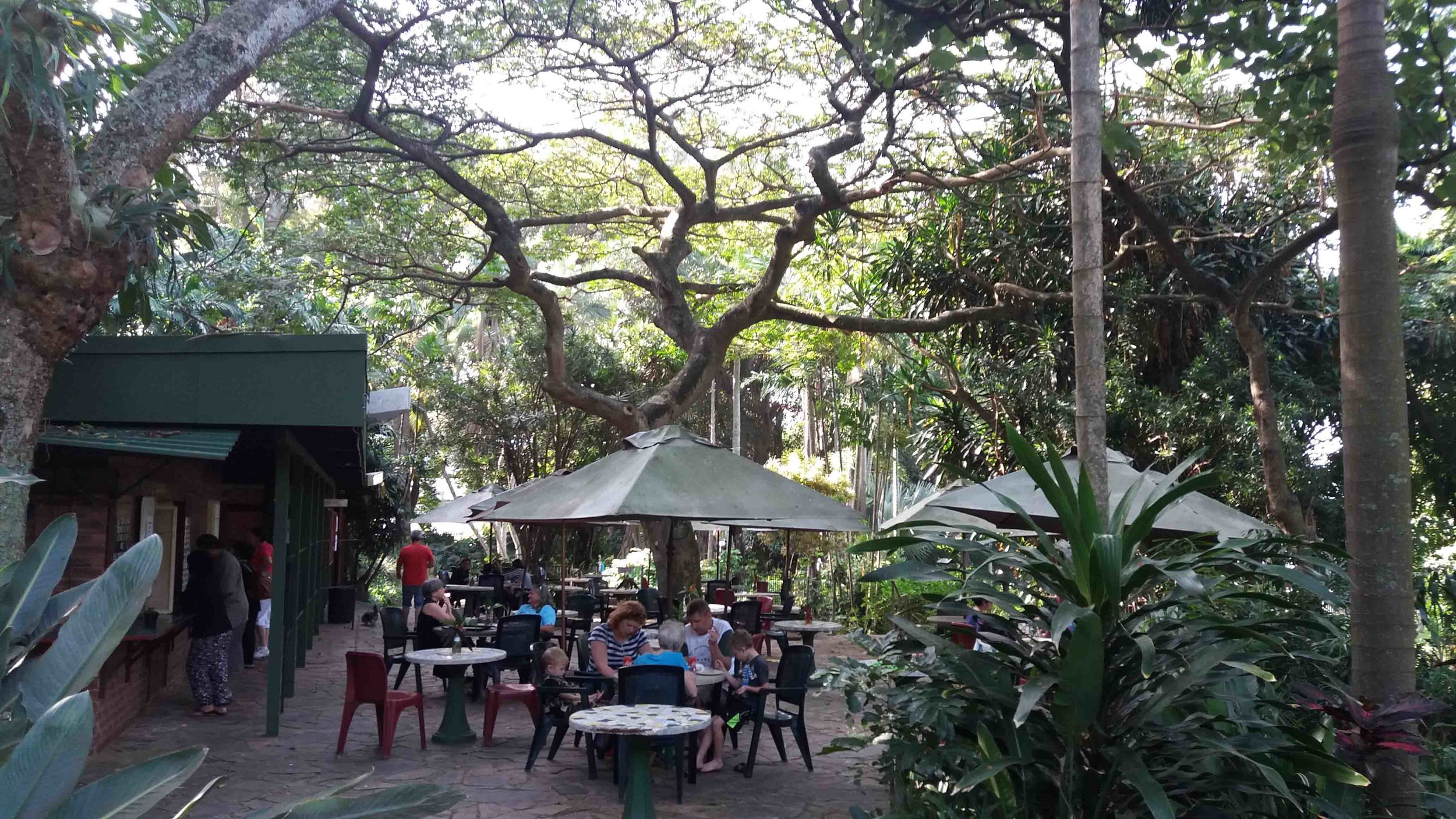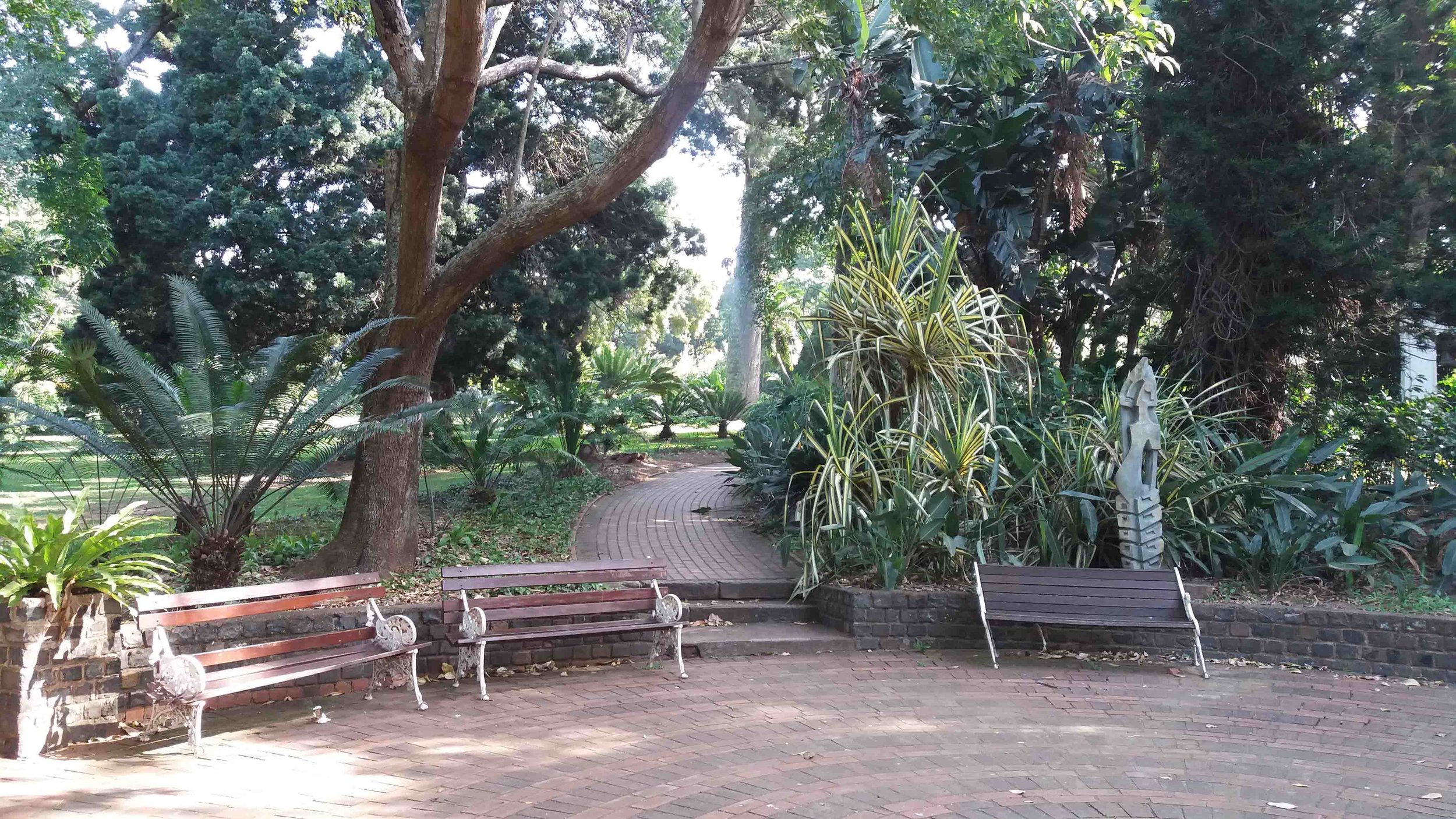Indigenous Grasses with Cycads and Aloes. Trees screening neighbouring house.
House E is a stunning example of the beauty that South African flora holds and makes use of indigenous grasses with several focal plants in between.
A grass mix including Aristida junciformis and Melinis nerviglumis was interplanted with several bulbs such as Ornithogalum thyrsoides, Dierama spp, Eucomis autumnalis and Eucomis comosa, which formed the main planting theme.
Several feature plants grow out of the grass mix including Aloes, Proteas, Cabbage Trees and Cycads.
Trees: Large Olive trees were used as the primary screening elements which were interplanted with Loxostylis alata, Dombeya rotundifolia, Heteropyxis natalensis and Nuxia floribunda. Dais cotinifolia were also added as feature trees.
Shrubs: a screening hedge of Dodonea angustifolia created a green boundary and smaller shrubs such as Polygala myrtifolia, Coleonema alba and Euryops virgineus were added.
Before and During Construction
After Implementation and then the greener images are taken 4 months after installation.



